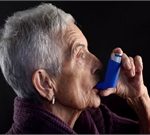
Doctors are increasingly worried that people are mistaking stay-at-home orders to mean they should avoid emergency medical care — including for serious lung diseases. People with chronic lung conditions, such as emphysema and moderate to severe asthma, are among those at higher risk of becoming seriously ill with COVID-19. And medical experts have been urging them to be vigilant about protecting themselves. But now a new concern is surfacing: Are people being scared away from needed medical care? “We’ve been noticing it anecdotally in our practice,” said Dr. Koushik Kasanagottu, an internal medicine resident at Johns Hopkins Bayview Medical Center in Baltimore. He shared the example of one patient, a woman with emphysema, who on a recent morning woke with shortness of breath. She used her “rescue” inhaler medication — a standard way to manage a symptom exacerbation — but it didn’t help. Still, fears over COVID-19 kept her from seeking emergency medical attention. Eventually, her sister did call 911. But by the time she reached the hospital her condition had worsened to the point that she needed a ventilator. “The concern is definitely there,” said Dr. Albert Rizzo, chief medical officer of the American Lung Association. “Some people might think twice about going to the hospital, rely on their rescue medications, and try to tough it out.” It is, of course, understandable that people… read on >























-300x200.jpg)













